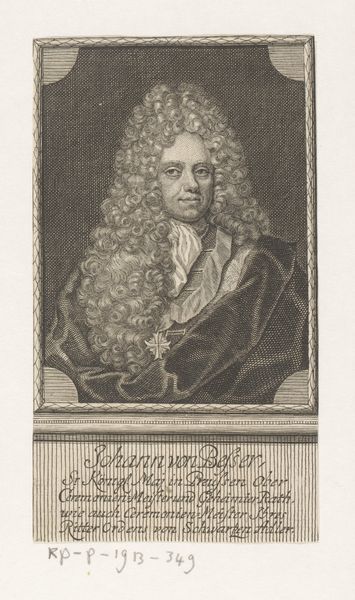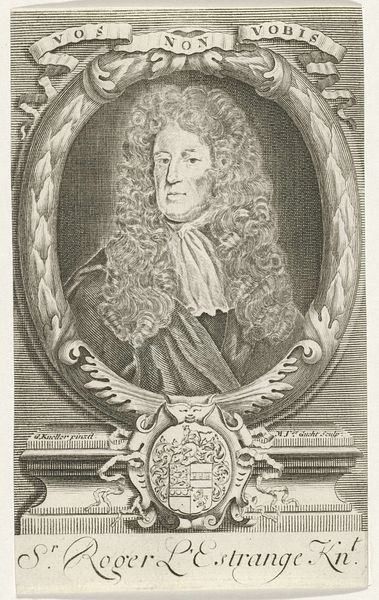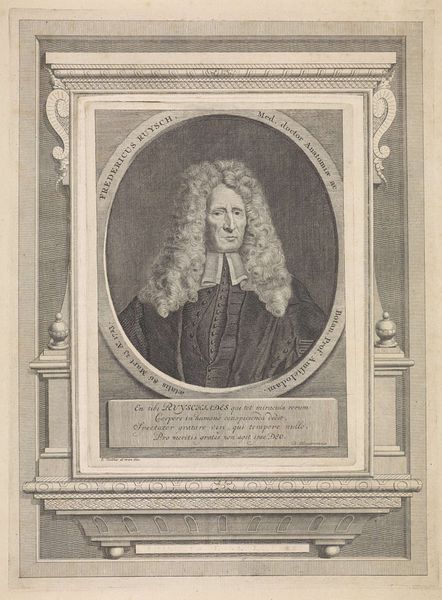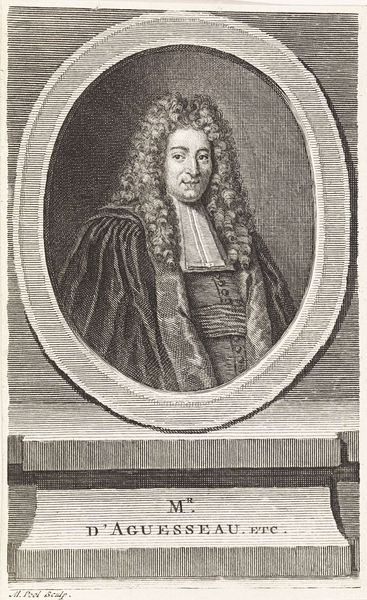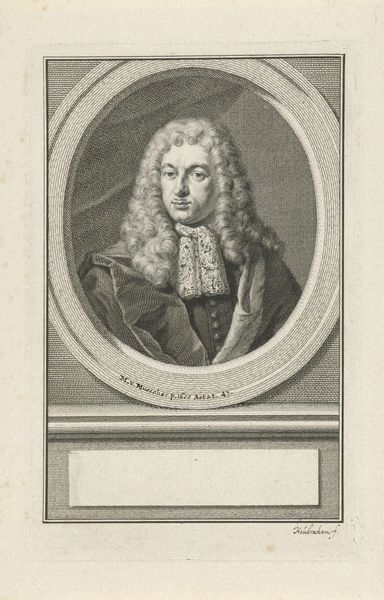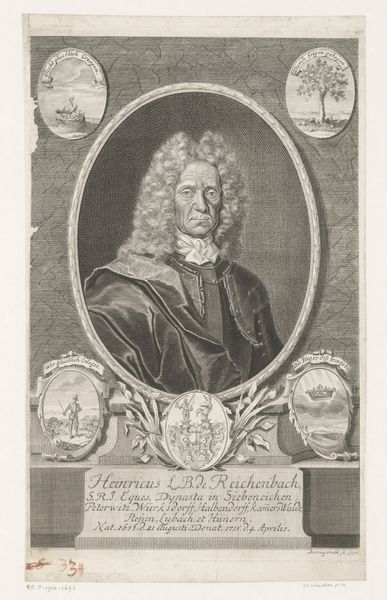
engraving
#
portrait
#
baroque
#
old engraving style
#
history-painting
#
engraving
Dimensions: height 229 mm, width 168 mm
Copyright: Rijks Museum: Open Domain
Curator: Here at the Rijksmuseum, we have Jan Wandelaar's "Portret van de arts en botanicus Frederick Ruysch," an engraving dating from after 1723. What strikes you about it? Editor: Immediately, I'm drawn to the textures—the density of lines creating depth, and the elaborate detail in the wig versus the more simplified rendering of the face. The contrast suggests an interest in societal markers, perhaps even status anxiety. Curator: Absolutely. As an engraving, consider the process involved: the physical act of carving into the copper plate, the laboriousness of the reproduction. The very making mirrors Ruysch's anatomical investigations—dissecting layers, revealing what lies beneath. Were these prints widely distributed? Did that access alter understandings of the body? Editor: That’s where things become very interesting from a historical perspective. Prints such as this were integral in disseminating scientific knowledge. It elevated Ruysch as a public figure, establishing him within a network of academic authority—particularly during the Dutch Golden Age, a period defined by breakthroughs in science and a burgeoning interest in natural philosophy. Curator: Yes, there’s an overt connection to consumption, too. The Latin inscription implies a duty of gratitude to God—almost presenting Ruysch's work as devotional practice. But what does the portrait *do*? How did viewers understand themselves in relation to these ideals of medical science? Editor: Portraits like these help create celebrity; Ruysch *was* a celebrity doctor. The institutions sponsoring these portraits certainly shaped both their creation and their function—displaying power through likeness, connecting Ruysch, his achievements, and his reputation, back to these influential groups. Curator: So the materiality and accessibility create a powerful tension – this print performs an almost devotional quality in its dissemination while shaping societal narratives of scientific knowledge and professional esteem. It also prompts thinking about artistic skills that supported knowledge-making at the time. Editor: Ultimately, the work highlights the power of representation itself. These were visual strategies for constructing identity and enshrining scientific advancements within the cultural narrative. Curator: Indeed. A complex piece showcasing the intersection of art, science, and society. Editor: Leaving us to ponder who really benefits from that construction of image and legacy.
Comments
No comments
Be the first to comment and join the conversation on the ultimate creative platform.



